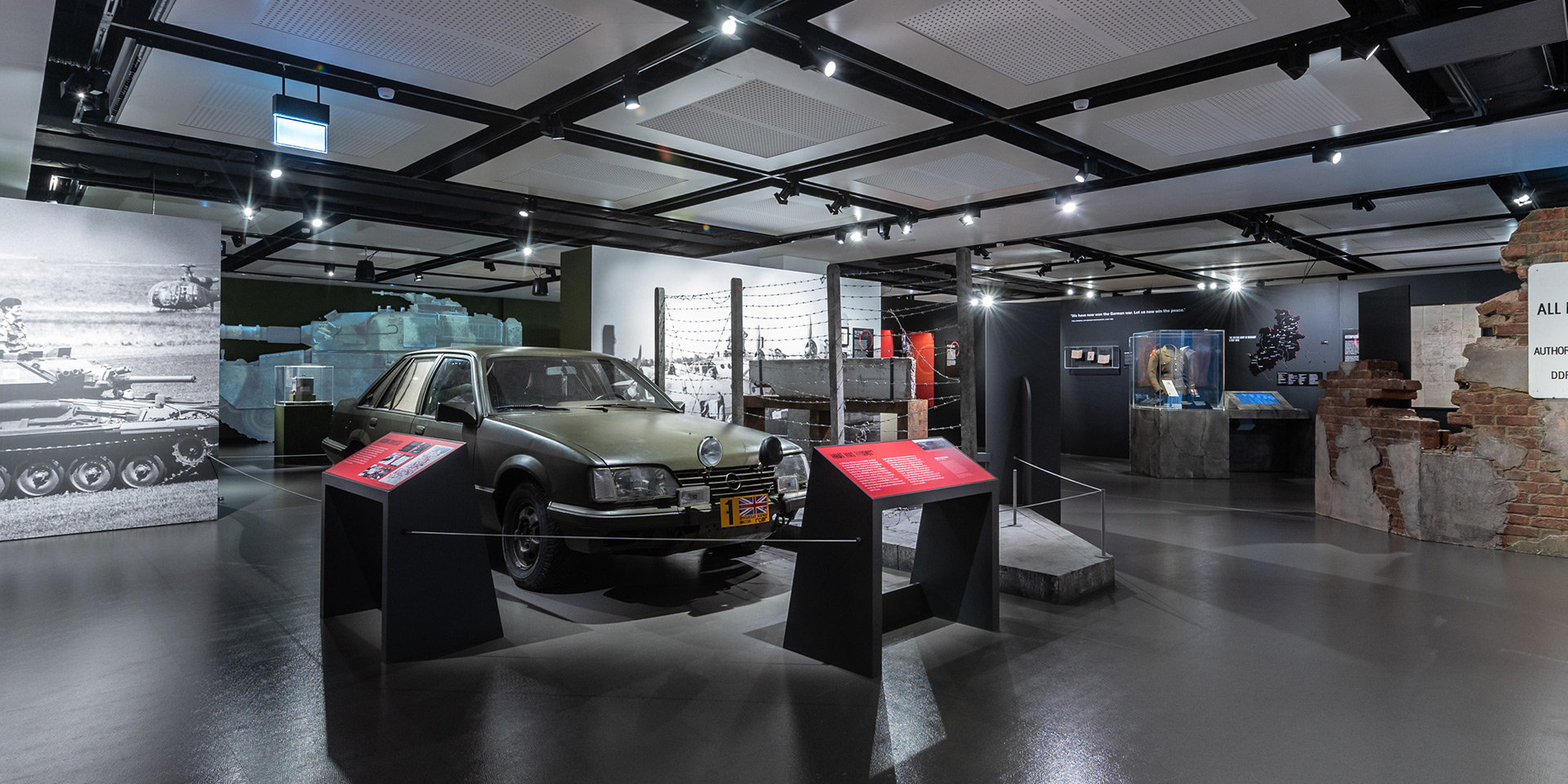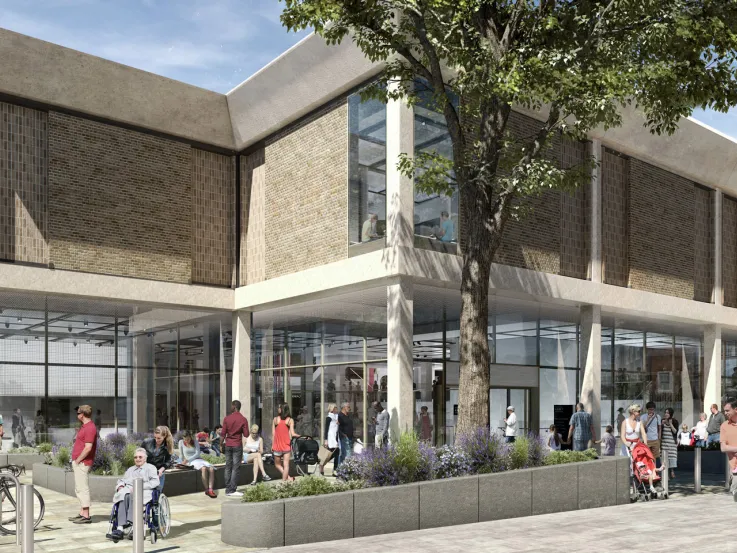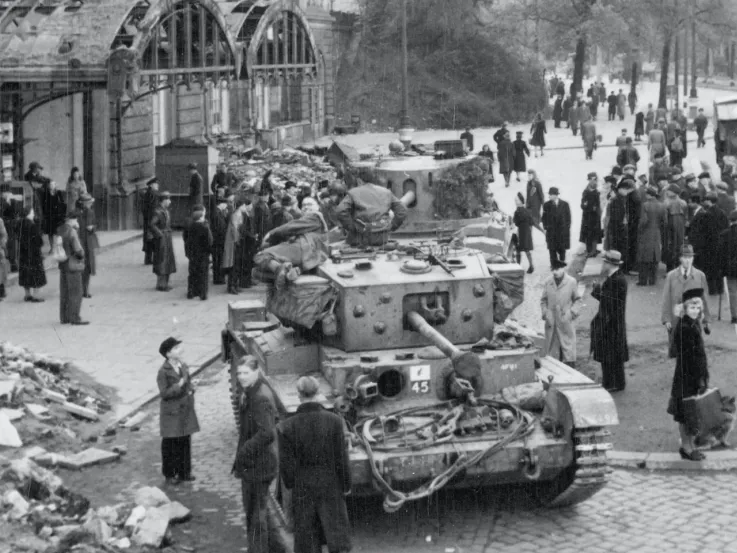National Army Museum opens major exhibition ‘Foe to Friend: The British Army in Germany since 1945’

Foe to Friend exhibition space
Saturday, 12 September 2020
The National Army Museum in Chelsea will open major exhibition Foe to Friend: The British Army in Germany since 1945 this month.
Charting the British Army’s time in Germany from the end of the Second World War to the present day, the exhibition tells the story of the Army’s role as they helped to rebuild a nation, provided protection during the Cold War and used Germany as a base from which to deploy troops across the world.
For over 75 years, more than two million British service personnel and their families called Germany home. At the culmination of a 10-year drawdown, this February saw the formal closure of British Forces Germany, with British troops handing back their headquarters at Catterick Barracks in Bielefeld. With no combat units now left in Germany, it marked the end of an era.
To acknowledge the huge impact of Germany on the soldiers and families of the British Army who lived and worked there, this exhibition will celebrate and commemorate this significant aspect of the Army’s history. The words of those who lived the experience, never-before seen objects, new acquisitions collected directly from Germany during the drawdown, photography and video will be brought together in five themes: Winning the Peace, Walls and Wire, Active Edge, Deployments and Legacy.
In ‘Winning the Peace’ visitors will discover the role of the British Army of the Rhine (BAOR) in a divided Germany. In the immediate aftermath of victory over Germany the Second World War, our Army took part in an enormous rebuild operation, confronting the horrors of the Holocaust and supporting the thousands of refugees made homeless by the War. Letters going on display in the galleries command non-fraternisation between Brits and Germans highlighting the position of Germany as the ‘enemy’. During this period garrison towns were erected, serving as a ‘little Britain’ overseas. The athletics medals of Bevis Shergold, a veteran of the war in Europe and who lived in Germany with her husband in the 1950s reveal the thriving sporting and cultural scene that was established to cater for the military migrants, and represent how garrison towns imitated British life by putting on sporting competitions or events to rival towns on British shores.
A piece of the Berlin Wall and the story of its construction are central to ‘Walls and Wire’, a section of the exhibition that tackles the new world order and growing threats from Soviet Russia as Europe slid into the Cold War. Emblematic of the Iron Curtain that divided Europe, Berlin remained an incredibly exciting posting for British soldiers, but one fraught with tension. It was a situation like no other, an experience unparalleled in the history of the Army.
‘Active Edge’, a term used by the Army for exercises that brought about fast mobilisation under the Soviet threat, will bring the heat of these tensions during the Cold War era to life, when the British Army stood, ready to act, on the frontline of the ideological battle between the West and the Soviets. Artefacts relating to the constant training, including those relating to the very real risk of nuclear, chemical and biological war, will showcase the Army’s incredible professionalism and focus in this period. This peaked with 1984’s Exercise Lionheart, the biggest British military exercise held since the Second World War involving 131,000 UK troops – and the underlying threat and tension within the section will show the extent to which the British Army were ready and preparing for a World War Three scenario.
The fall of the Berlin Wall in 1989 saw the size, structure and role of the British Army in Germany transform forever with huge impacts on the soldiers and their families. As the Army in Germany was cut in size by half, it was also called on to serve overseas. ‘Deployments’ will uncover the role of BAOR in the conflicts of the 90s and 00s, including a uniform, helmet, and maps used in Operation Granby, where an entire division of BAOR was deployed out of Germany as part of a multinational coalition that drove Saddam Hussein’s forces out of Kuwait – the first time British forces had deployed from Germany in such large numbers in 45 years. British forces based in Germany also made major contributions to operations in Bosnia and the wider Balkans, as well as those in Iraq and Afghanistan. As troops went overseas, garrison towns emptied and families suffered new hardships. But restrictions on life in Germany were also lifted. The fall of the Berlin Wall and the collapse of the Soviet Union created new places to explore, and new adventures for those stationed in the heart of Europe. The wedding outfits of Sigrid Krueger and Anthony Young, who met singing in an Anglo-German Choir in Rinteln and who still live in Germany today, highlight the transformation in the relationship between the British and their German friends, neighbours and lovers.
The final section of the exhibition ‘Legacy’ will look at the impact of this long and close relationship between the Army and Germany in the aftermath of the 2010 decision to remove all but a handful of soldiers from Germany, and what the future holds. A new chapter in that relationship is beginning, but it is the perfect time to look back on the Army’s time in Germany. It is a story of moving from foe to friend.
Dr Peter Johnston, Head of Collections Research and Academic Access at the National Army Museum, spent four years in the field with the British Army, culminating in his recent book, ‘British Forces in Germany: The Lived Experience’, which has formed the basis of the exhibition.
Dr Johnston said of the exhibition:
‘It has been a true pleasure and privilege to work on this exhibition and bring to light the personal histories of so many British soldiers and families that called Germany home. This was an incredibly significant period of history not just for the Army, but for the world. We hope that this exhibition will offer a chance for soldiers and their families to look back at this complex period of history with fondness and nostalgia, and for our visitors to learn more about the lasting alliance between the British and German communities established over the decades.’
Notes to editors
For more information, imagery and interview requests, please contact:
- Claire Blackshaw, National Army Museum
cblackshaw@nam.ac.uk
020 7881 2433 - Charlotte Sluter, Sutton
charlotte@suttoncomms.com
07525 118 263
Listings:
- Exhibition: 'Foe to Friend: The British Army in Germany since 1945'
- Dates: 12 September 2020 – 1 July 2021
- Location: National Army Museum, Royal Hospital Rd, London SW3 4HT
- Admission: Free
- Opening times: Tuesday – Sunday, 10.30am – 3.30pm (last entry 3pm)
- Tickets to the museum must be booked online in advance.
Join in the conversation:
- Instragram/Twitter and Instragram: @NAM_London
- Facebook: facebook.com/NationalArmyMuseum
- Follow #FoeToFriend
About the National Army Museum
Established in 1960 by Royal Charter, the National Army Museum is the United Kingdom’s leading authority on the history and traditions of the British Army. It explores the impact that soldiers from Britain, Ireland and the Commonwealth have had throughout the world, from the 17th century to the present day. Through its world-class collections, the Museum safeguards and shares the stories and values of ordinary people who have been called upon to bear extraordinary responsibilities on behalf of others.


